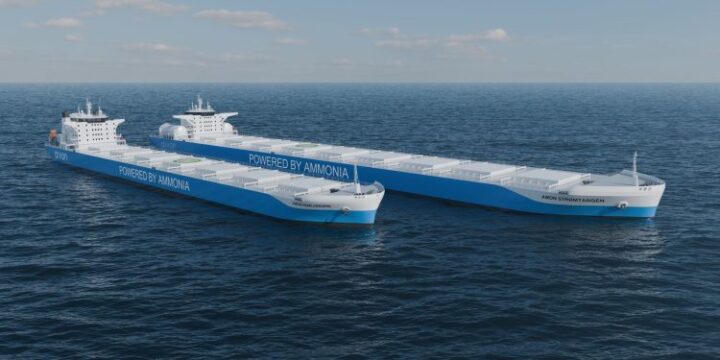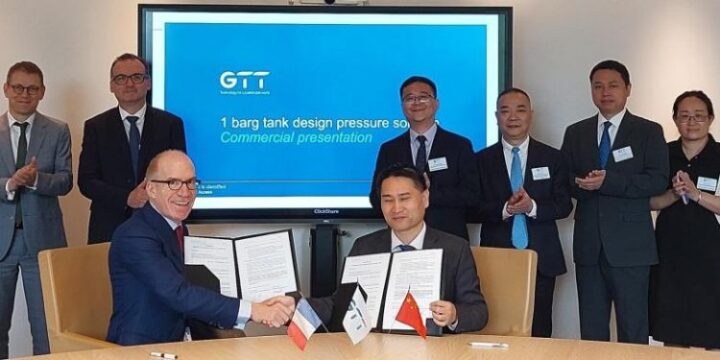July 1, 2025

DNV data reveals that ordering of alternative-fuelled vessels is continuing to grow in 2025, despite a slowdown in the overall newbuild market.
Surge in alternative-fuelled vessel orders
According to data from DNV’s Alternative Fuels Insight (AFI) platform, new orders for alternative-fuelled vessels reached 19.8 million gross tonnes (GT) in the first six months of 2025, exceeding the 2024 figure by 78%. This marks a significant shift in capital allocation, as shipowners increasingly prioritize future-ready assets in response to regulatory pressure, fuel availability, and long-term decarbonization goals.
Order volume stable, but tonnage rises sharply
A total of 151 alternative-fuelled vessels were ordered in the first half of 2025, slightly behind the 179 orders placed during the first six months of 2024. Even so, the overall GT has increased markedly, showing a 78% year-on-year growth driven mainly by activity in the container segment, but with notable orders also in the bulker, tanker and RoPax segments.
DNV finds that this concentration suggests that some of the industry’s most commercially exposed and operationally complex segments are now leading the charge, reinforcing the view that alternative fuels are no longer a fringe strategy, but a mainstream investment decision.
Even in a slower newbuild market, fuel choices are diversifying, and decarbonization is becoming embedded in everyday decision-making. We expect that fuel choices and energy efficiency investments will accelerate as the regulatory framework becomes clearer over the next 4-10 months
… said Knut Ørbeck-Nilssen, CEO Maritime at DNV, noting that the energy transition is no longer driven solely by first movers, it’s now being shaped by a second wave of shipowners who are integrating alternative fuels and technologies into their core strategies.
Jason Stefanatos, Global Decarbonization Director at DNV, echoed the sentiment adding that the data reflects a sector that is actively recalibrating. According to Stefanatos, there is not a slowdown in ambition, but rather a more measured approach to investment—one that balances optionality, compliance readiness, and long-term fuel strategy.
LNG dominates, methanol gains momentum
LNG was the clear fuel of choice, accounting for 87 new vessels ordered, totaling 14.2 million GT so far in 2025. The fuel remains dominant in the container segment, with 13.6 million GT (81 vessels). Methanol has also shown strong momentum, with 4.6 million GT (40 vessels) ordered across the container, RoPax, tanker, offshore, and car carrier segments.
Ammonia and hydrogen show early-stage activity
Ammonia and hydrogen, while still niche, continue to register activity, suggesting early-stage confidence in their long-term potential. Three ammonia-fuelled were added to the orderbook, primarily in the tanker and general cargo segments (37.000 GT total). Hydrogen made a return with four vessels (114.000 GT) currently on order.
Bunkering infrastructure scales with demand
Supporting infrastructure is also evolving in parallel with vessel investments. In the first half of 2025, 13 LNG bunkering vessels were ordered, compared to 62 in operation globally, with February marking the strongest month for this segment with eight orders.
This growth reflects a steady alignment between alternative-fuelled vessel orders and the supporting logistics required to scale their use, particularly for LNG, where bunkering capacity is becoming a critical enabler of continued adoption.
As shipowners weigh compliance strategies, the upcoming fuel intensity rules, which form part of the IMO’s Net-Zero Framework, are expected to accelerate this shift. We’re watching closely to see how this will be reflected in future ordering behavior, particularly as fuel availability and infrastructure evolve, and we get further regulatory clarity when IMO’s lifecycle assessment guidelines are decided
… said Stefanatos.

